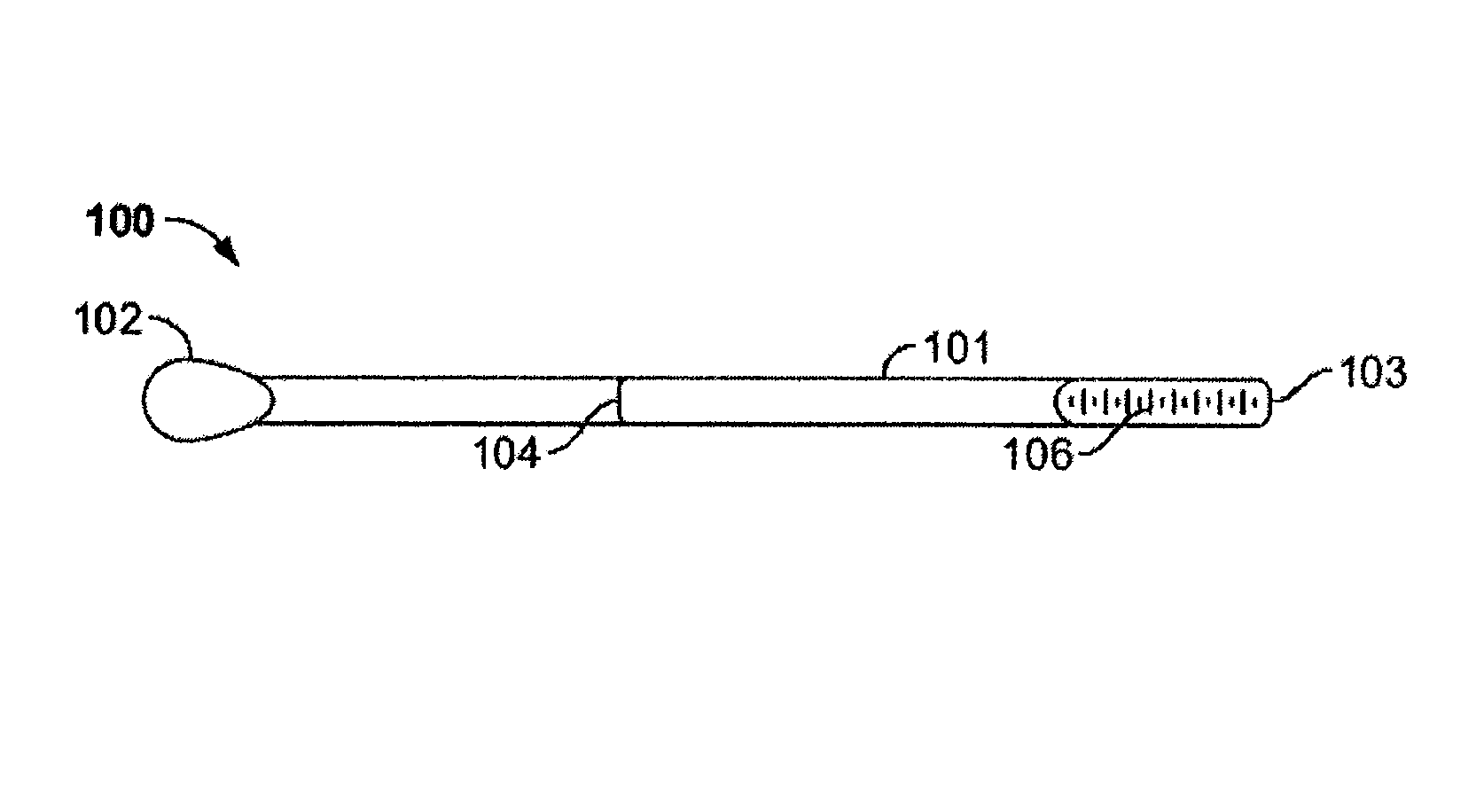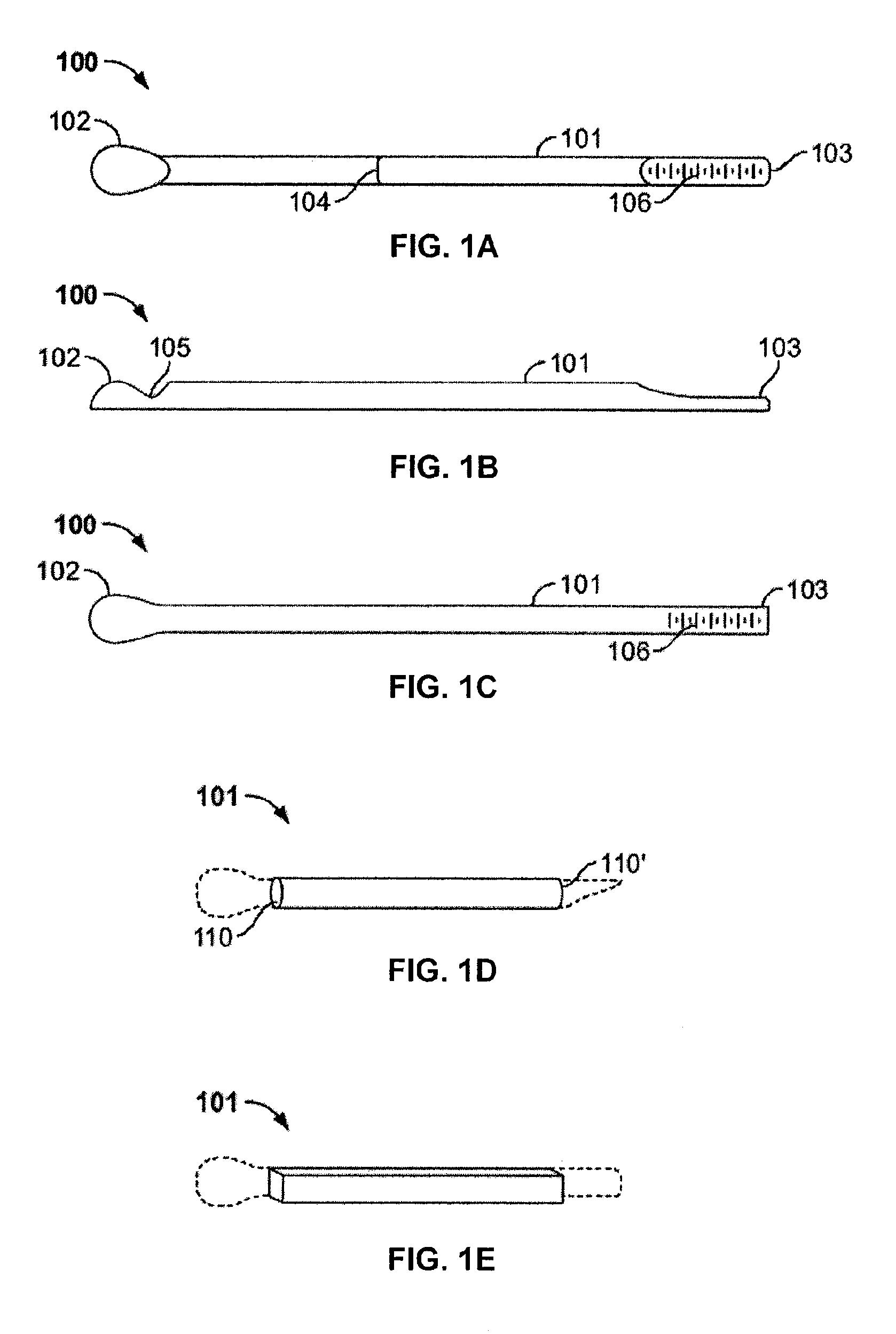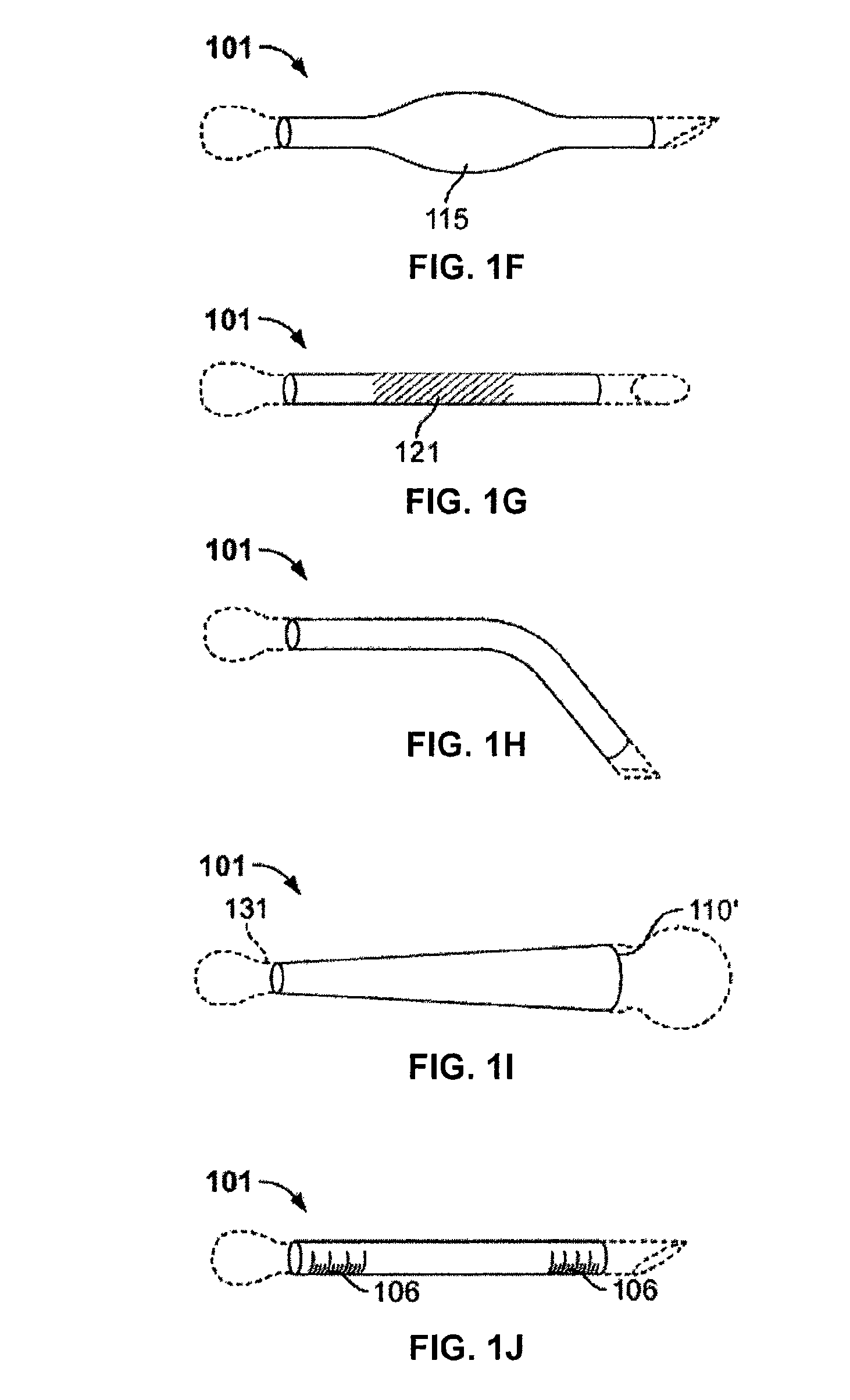Laboratory spatula
a laboratory and spatula technology, applied in the field of spatulas, can solve the problems of heavy spatulas, difficult manipulation, and difficult manipulation of spatulas, and achieve the effect of increasing the possible use of spatulas
- Summary
- Abstract
- Description
- Claims
- Application Information
AI Technical Summary
Benefits of technology
Problems solved by technology
Method used
Image
Examples
Embodiment Construction
)
[0031]In general, a laboratory spatula may be a disposable laboratory spatula comprising a stalk region connected to one or more manipulating regions for collecting, transferring, measuring or storing material such as chemicals (e.g., laboratory chemicals), solutions or the like. The laboratory spatula may include a connecting junction (e.g., a neck) between the stalk region and a manipulating region. The laboratory spatula may also be at least partially hollow, so that the manipulating regions are adjacent to openings into the stalk region.
[0032]FIGS. 1A to 1C show an example of a spatula 100 configured such that a user can hold the spatula 100 to use a first manipulating region (shown here as a shovel region 102) or a second manipulating region (shown here as a scoop region 103). The spatula includes a stalk region 101 having a hollow first end and a hollow second end that allows the spatula 100 to be used to place quantities of gases, liquids or solids inside the stalk portion. ...
PUM
 Login to View More
Login to View More Abstract
Description
Claims
Application Information
 Login to View More
Login to View More - R&D
- Intellectual Property
- Life Sciences
- Materials
- Tech Scout
- Unparalleled Data Quality
- Higher Quality Content
- 60% Fewer Hallucinations
Browse by: Latest US Patents, China's latest patents, Technical Efficacy Thesaurus, Application Domain, Technology Topic, Popular Technical Reports.
© 2025 PatSnap. All rights reserved.Legal|Privacy policy|Modern Slavery Act Transparency Statement|Sitemap|About US| Contact US: help@patsnap.com



